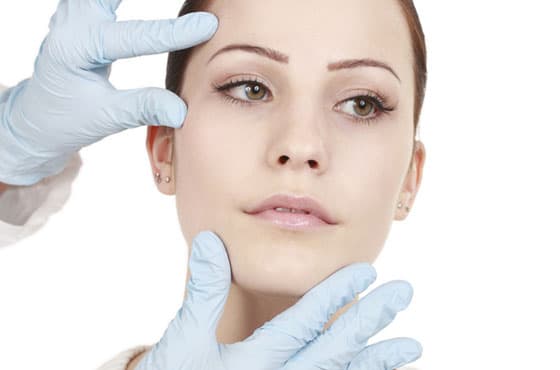People communicate with each other at eye level, which is why eye wrinkles are considered a major flaw. They are not only a tell-tale sign of a person’s age, but also frequently give an indication of the person’s lifestyle habits and life experiences. Happy people have more laugh lines under and next to their eyes. These so-called crow’s feet are less prominent in people who tend to frown. These people tend to have vertical lines between the eyebrows instead of eye wrinkles. They are not called frown lines or worry lines for nothing.

An important cause of eye wrinkles is intense facial expressions. Due to the rapid switch between tensing and relaxing of muscles, it causes the skin and connective tissue to fatigue. Combined with the natural ageing of the skin, facial expressions often cause premature superficial lines that can be easily treated with very simple methods.
However, these wrinkles can very quickly become so deep that they are visible even if the face is relaxed. Other factors contribute to this phenomenon:
The majority of the eye wrinkles caused by environmental influences are referred to as actinic wrinkles. The term is derived from the Greek word ‘actis’ meaning ‘ray’. It is important to know that natural UV rays from the sun as well as artificial rays from sunbeds increase wrinkles around the eyes. People with very light skin are statistically more likely to be affected by actinic wrinkles. In addition to UV rays, dry air in heated rooms, the wind and cold air in the winter also play a key role. Furthermore, experience has shown that regular contact with salt or chlorinated water quickly dries out the skin.
Eye wrinkles do not only appear in the form of crow’s feet. Unwanted creases also occur on the lower and upper eyelids. While many people tolerate them on the lower eyelids, the wrinkles on the upper lids are far more bothersome. This is because gravity can cause the skin to sag and impair vision. This negatively affects a person’s appearance because eye wrinkles can turn into hooded eyelids. They cannot be hidden – even with professional make-up. People with high blood pressure and kidney and bladder disorders often suffer from water retention, which is also a possible cause of eye wrinkles. This makes the tissue in the upper and lower lids heavier and can therefore be made worse by gravity.
Here, it is important to distinguish between primary and secondary ageing. Primary ageing is the result of cellular processes. Eye wrinkles form, for example, due to the decreased ability of the skin to produce collagen fibres. They are very tight and give a smooth complexion when we are young. If the number of collagen fibres is reduced, the fine expression muscles get the upper hand and cause the skin tissue to contract. Therefore, the eye wrinkles caused by primary ageing can be avoided in the long term by specifically relaxing the expression muscles. In addition to environmental influences, the factors of secondary ageing also include the consequences of consuming addictive substances, lack of sleep, nutrient deficiencies and illnesses. While most of the causes of secondary ageing can be avoided, primary ageing cannot.

In order to keep wrinkling around the eyes as low as possible and to prevent them from forming prematurely, the following recommendations can be observed:
An often underestimated factor for wrinkles around the eyes and other wrinkles on the face is pillows. The incline of the head on the pillow while we sleep pushes the skin on the cheek upward due to the pull effect. This stretches the skin and the contractions of the expression muscles take advantage of this additional leeway. This means incorrectly positioning the head while asleep contributes to the development of deep eye wrinkles, particularly around the lower eyelid. Half-sized pillows are recommended, as they balance out the difference in height between the upper arm and the side of the head. This can also prevent premature degeneration of the cervical spine.
When treating eye wrinkles, the cosmetic surgeons do not necessarily have to resort to using a scalpel; a wide variety of non-surgical treatments are available. The first choice is injecting hyaluronic acid into the wrinkles. Hyaluronic acid is a glycosaminoglycan that the human body also produces. It boosts water storage in the tissue, which naturally plumps up the wrinkle. Small wrinkles completely disappear after this treatment, and deeper wrinkles can be significantly reduced. The benefit of this wrinkle treatment is that it can be repeated as often as necessary without the risk of damage. Alternatively, other kinds of fillers can be used, for example the body’s own fat or collagen.

Using Botox for eye wrinkles is particularly suitable for treating expression wrinkles. Botulinum toxin, also known as Botox, is a neurotoxic protein. Injecting it inhibits the function of the expression muscles that are responsible for causing eye wrinkles. However, the dose plays an important role, which is why patients should always contact experienced cosmetic surgeons for this procedure. If the dose is too high, it can significantly affect facial expressions. This is avoided if the dose is correct. Wrinkle treatment with Botox can also be repeated at individual intervals.
Call us (0211-55028780) or arrange an appointment with your doctor using our online calendar. Find available appointments.
Arrange a consultation online